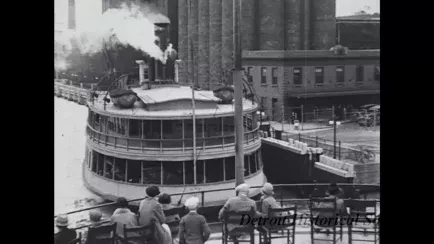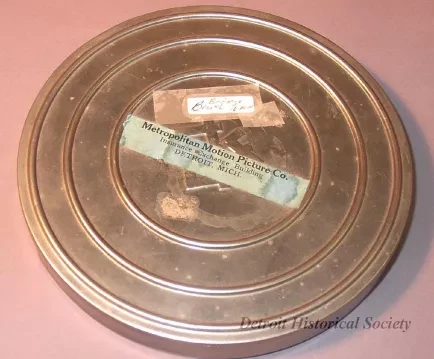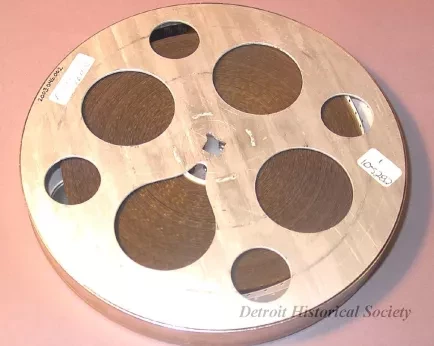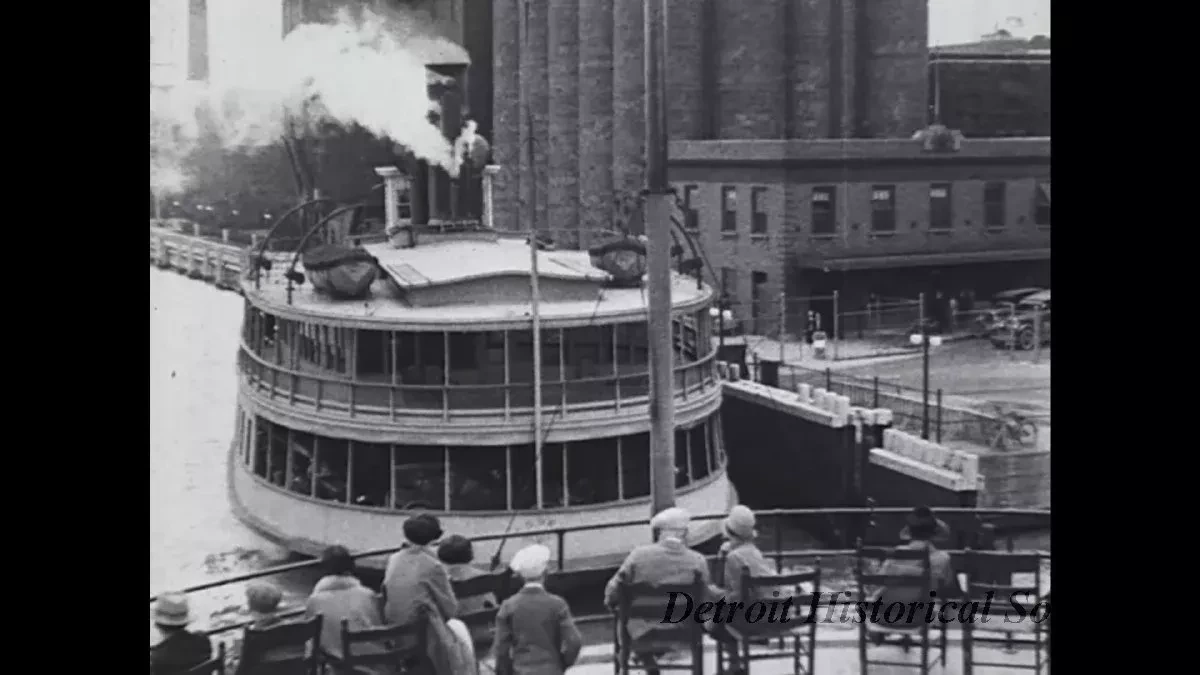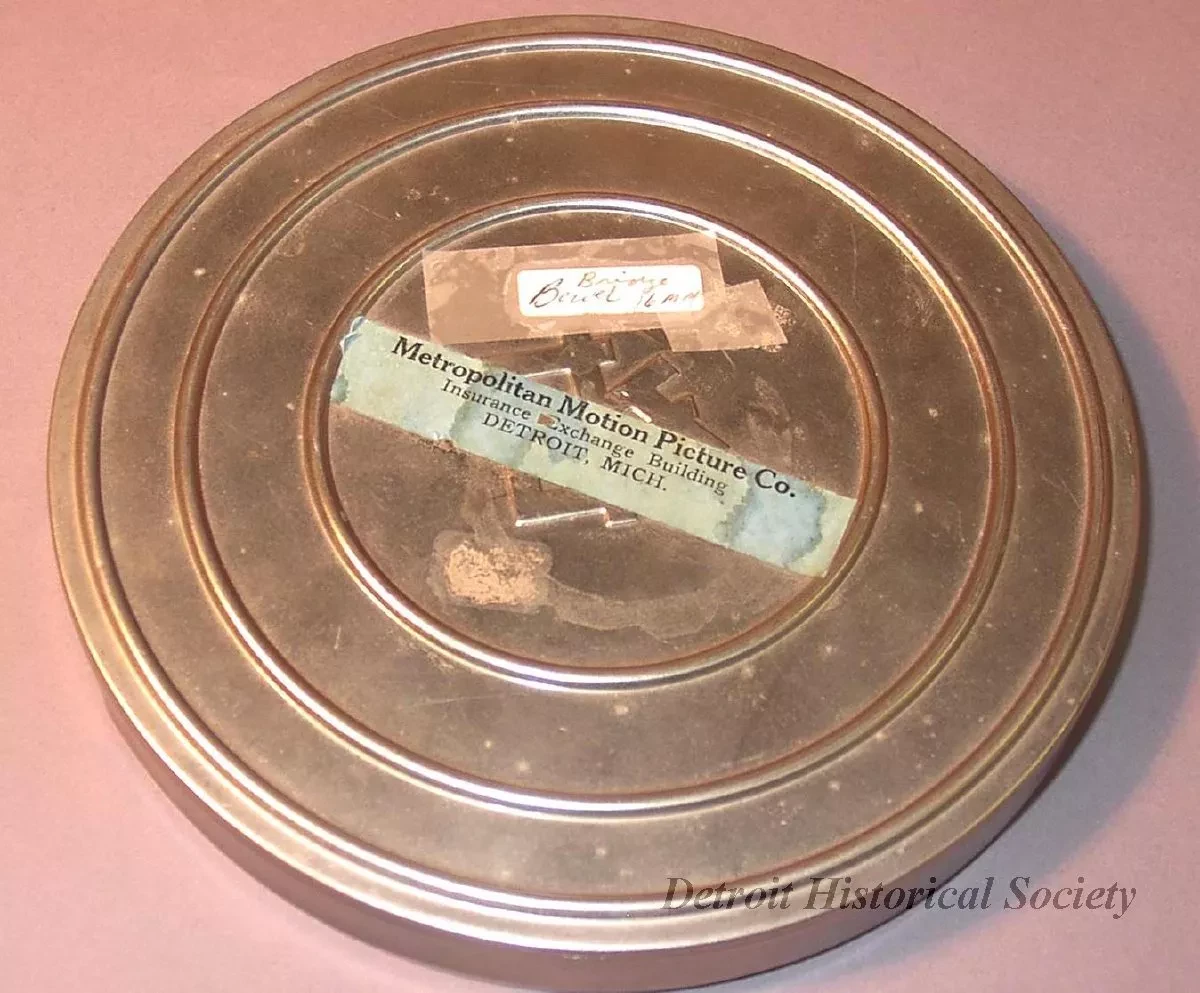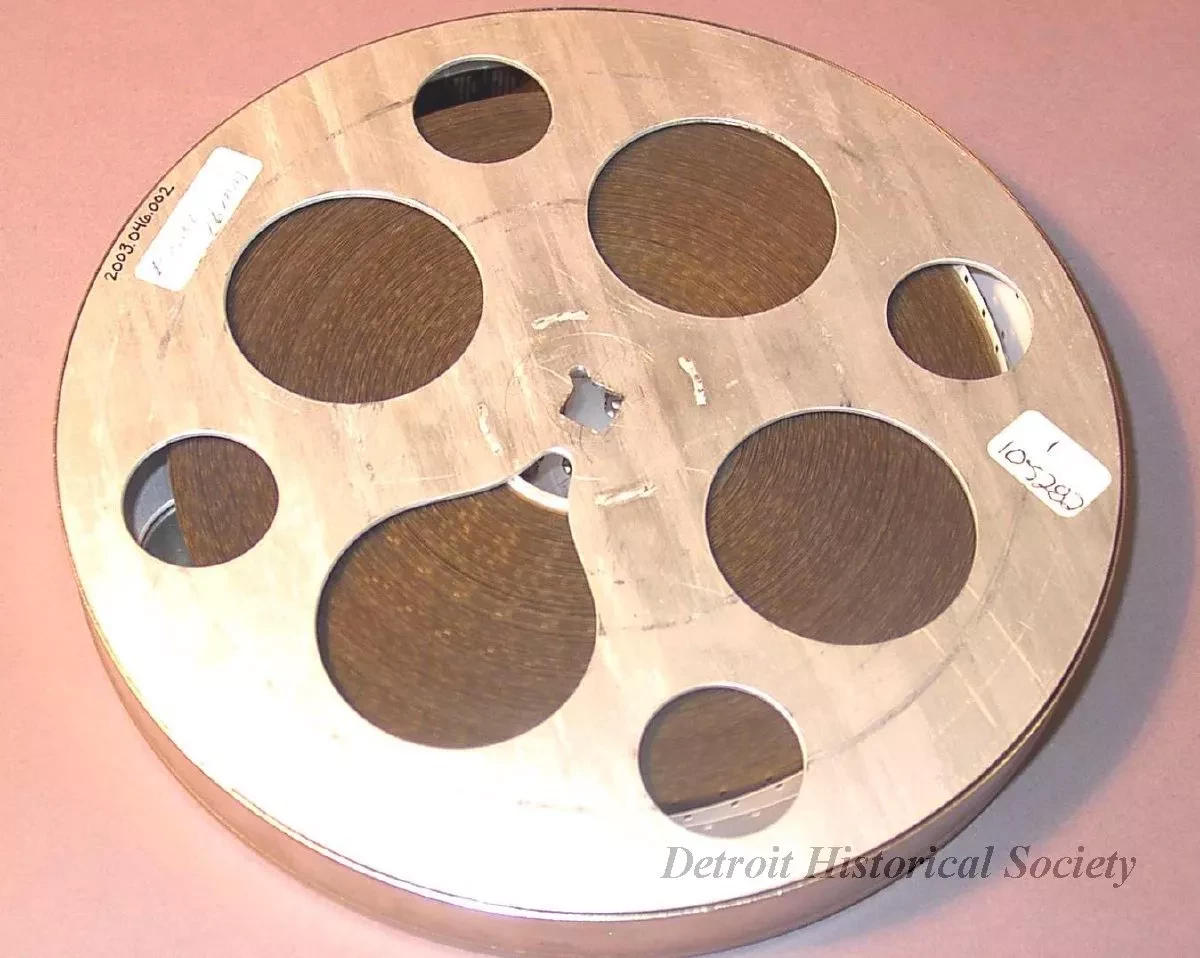Film, Motion Picture
Detroit Needs The Proposed International Bridge
Silent black and white 16mm film titled, "Detroit Needs the Proposed International Bridge," urging voters to support the International Bridge Ordinance in a special election on June 28, 1927 allowing for the construction of what would become known as the Ambassador Bridge. The film features both footage of ferries and docks which the bridge would alleviate, as well as of the construction and operation of the Delaware River Bridge which it cites as a model for Detroit's proposed bridge. The film also incorporates a short clip from the newsreel about the driving of the first ceremonial stake in the bridge's construction in Sandwich, Ontario.
The film opens with a pair of title cards which read, "Detroit Needs The Proposed International Bridge," "Next Tuesday, June 28th, the people of Detroit will go to the polls to vote on a proposition vital to the continued progress of their city--The Detroit-Windsor Bridge." This is followed by an illustration showing the proposed bridge, and a series of attritional title cards, "The voters will be asked to vote on an ordinance giving the American Transit Company the right to bridge over five streets with the approach to the span that will cross the river," and "Twenty millions of dollars will be expended by the company and not one cent will be asked of the taxpayers." The title cards continue, arguing, "Ferries are inadequate. Their use causes congestion and the loss of much time." A brief clip follows of cars being loaded onto a ferry.
The film then turns to the example of the Delaware River Bridge between Philadelphia and Camden. A title card explains, "Philadelphia, Pa. and Camden, N.J. have been relieved of a great traffic tangle by the construction of the Camden bridge. The public had been subjected to conditions like these before the bridge was built." Shots follow of cars lined up beside the Pennsylvania R.R. Ferries terminal building, and being lo loaded onto the ferry GEORGE W. PERKINS. The titles cards continue, "The same condition exists in Detroit."
A shot follows showing the Detroit and Walkerville Ferry Company ferry ESSEX docked at the Walkerville Ferry Dock on Devonshire Road, as taken from the deck of another ferry. The Customs House and Hiram Walker and Sons grain elevators are visible on the shore in the background. The following shots show a back-up of cars, presumably at the Walkerville dock, followed by cars driving onto the ferry.
Title card follow declaring, "Congestion would be completely eliminated if a bridge were constructed," "The proposed bridge will be of the same modern design as the Camden bridge but will exceed it in length being the longest suspension bridge ever built." Aerial footage of the Delaware River Bridge is then used to illustrate this point. This is followed by a series of title cards interspersed with footage of the Delaware River Bridge's construction. The cards read "Construction will be followed along the same lines as in the building the Camden bridge. The winding of the cables for the footbridges of the Camden bridge," "Lifting the Camden footbridge cables into place. The pier, which is taller than the Book Tower, is the same type as the ones to be used at Detroit and Windsor," "Stringing the wires for the main cables," "Working 385 feet above the river," "The Detroit-Windsor bridge span will be 153 feet above the water," "Spinning the main cables, which will be 21 inches in diameter and made up of 18,325 wires stranded together," "The steelwork is suspended from the two main cables," "Raising the center girder into position," "After proper dedication the Camden bridge is opened an immediately becomes a public utility," "Fifty thousand automobiles use the Camden bridge in twenty four hours yet there is no congestion," "The arrangement of toll houses does away with any delay; just a moment is needed to pay the toll. The crossing of the bridge will take less than five minutes," and "The Detroit-Windsor bridge will be nearly a duplicate of the Camden bridge. When completed it will be a mile and a half in length with a span of 1850 feet." This segment ends with the plea, "Do YOU Want the Bridge? Vote 'YES' for the ordinance of June 28th."
Next on the reel is the newsreel excerpt from the Richards-Oakland News. An introductory title card reads, "Bridge Operations Begun in Canada. Alexander McKee, Mayor of Sandwich, drives first state in opening ceremony of proposed construction of Detroit-Windsor bridge." Footage follows of McKee giving a speech from atop a trunk in a field, then using a sledgehammer to pound a spike into the earth. "Joseph A. Bower, of New York, sponsor of the bridge," "J.W. Austin, treasurer of the American Transit Company," and "Officers of the American Transit Company," are then each introduced via title cards and then shown at the event.
The film ends with a series of concluding title cards, "The Detroit Windsor-Bridge, A few facts you should know concerning the proposed bridge to Windsor," "The bridge as it will appear when completed. The longest suspension bridge in the world," an illustration of the proposed bridge, "The City of Detroit is not building the bridge and it's construction and maintenance will not cost the city or taxpayers one penny," "The ordinance that you will vote upon provides that the toll shall be reasonable and just and is controlled by the Secretary of War," "The design of the bridge has been approved by the most prominent bridge engineers in the country and must receive the approval of the City Government," and "The only request embodies in the ordinance is permission to cross five streets in the air-the bridge will be built upon private property purchased by the Bridge Co."
The film is contained on a metal Eastman Kodak reel, housed within a matching canister. A label reading "Metropolitan Motion Picture Company, Insurance Exchange Building, Detroit, Mich." is affixed to the canister's lid, as is a handwritten label which reads, "Bridge, Bower 16mm."
Request Image